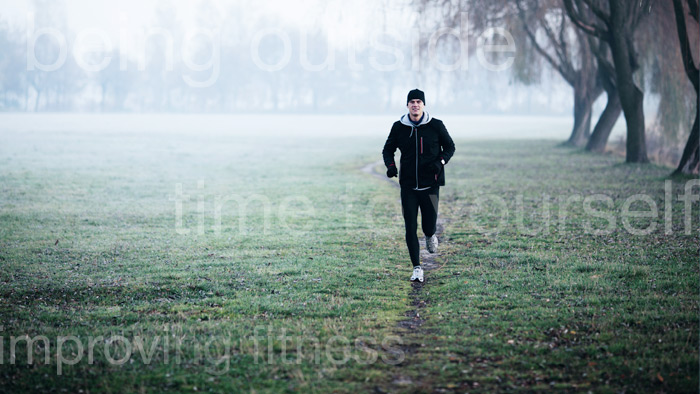When a person is resilient, we say they are able to return to a calm equilibrium quickly after dealing effectively with stressful events. Stressful events can be physical, such as a hard training session or competition, or psychological, such as work or relationship stress.
The flexibility of the body’s autonomic nervous system underpins the ability to respond to stresses effectively and explains some of the differences between people in their levels of resilience.
HRV and resilience
We’d all like to be more resilient, and it turns out that both monitoring and finding ways to improve our heart rate variability (HRV) can help us to do that. HRV is an easily measured output of the body’s autonomic nervous system. High HRV is associated with a flexible autonomic system capable of a high degree of resilience, whereas low HRV has been associated with anxiety, depression and even post-traumatic stress disorder PTSD.
When I created the ithlete app in 2009, one of my goals in doing it was to improve my own resilience—to training, and to life stresses in general. With initial HRV numbers in the mid 60’s I was quite disappointed with my early baseline, so I’ve spent time over the years researching ways to improve my HRV, and trying them out on myself. Some of the ones that worked best really surprised me, and I’ve listed 5 of my favorites later in this post. In spite of being a decade older now, I’ve managed to find ways to hold my baseline at least level over a 10 year period (as shown in the figure), while the research shows that HRV usually declines with age.
What does the research say?
The relationship between resilience and HRV has been formally studied only a few times, and a recent study conducted by the US military on Special Forces personnel is worth a special mention.
Military researchers measured the HRV baseline of personnel and had them complete questionnaires used to uncover elements of resilience such as emotion regulation, flexibility and spirituality. They then put them through very short-term stress using loud noises that the participants weren’t expecting, and longer-term stress using a simulated Hum Vee armed combat episode requiring vigilance and deliberately evoking emotional reactions after the combat.
The researchers found several interesting things:
- That higher scores in the resilience questionnaires were associated with higher levels of parasympathetic HRV at rest.
- A fast shift from parasympathetic to sympathetic (fight or flight) dominance following the short-term stress was also associated with high levels of resilience.
- The same was true of a rapid return to parasympathetic dominance after the stressor had finished.
- Individuals with higher flexibility were more likely to show sustained sympathetic dominance during tense situations requiring sustained attention.
They concluded that people who perceived themselves as less vulnerable to stress are more able to swiftly vary their physiological and emotional responses and that this ability was associated with high HRV as an index of resilience.
One other piece of research to note, summarized here, looked at HRV and longevity. Suggesting that living for longer and remaining healthy seems to depend on good genetic makeup, or on lifestyle choices that boost HRV or most likely a combination of both. Importantly this reinforces the relationship between high HRV and resilience.
A High HRV Baseline Offers More Than Just Improved Resilience
Research has shown that a high baseline HRV confers multiple benefits, including:
- High levels of aerobic fitness
- Better cardiovascular health (lower blood pressure, flexible arteries)
- A calm, rational outlook with good mood levels, enthusiasm for daily tasks and reduced anxiety
- Good quality sleep
- Good prospects for longevity
It is likely that the combination of the above support the higher levels of resilience. However, this works both ways, as an improved resilience makes it easier to achieve things such as better sleep and diet irrespective of current stress levels.
Tracking HRV is quick, easy and highly responsive to short-term changes, making it the ideal barometer of health, fitness and resilience. As you make lifestyle changes to improve your resilience HRV will quickly track up or down, letting you know how effective the new practice may be.
How to improve your HRV baseline
So, if a high HRV baseline is associated with resilience, how can you improve yours? Here are 5 techniques that have worked well for me, and I have recommended to others:
Sleep well
Especially if you are training hard. The first 4 hours of sleep are especially important, since this is when human growth hormone and testosterone essential for adaptation are produced in the largest quantities.
Practice slow deep breathing
Yoga practices such as Pranayama have been used for centuries to facilitate relaxation, focus and concentration, and they work! There are many paced breathing apps available, but you can equally practice breathing in slowly through your nose for a count of 5, then exhaling for the same count again, repeating for 3-5 mins at a time.
Train below your aerobic threshold.
High volumes of low-intensity training are really what build your aerobic base, long-term health and at the same time minimize the chances of injury. When the pace is right, you should just be able to continue a conversation.
Try Cold showers
Cold showers directly stimulate the parasympathetic nervous system and have been found to reduce the incidence of winter colds by up to 25 percent. The good news is that you just need 15-30 seconds at the end of a regular hot shower to create the desired effect.
Pay attention to your diet
In particular, avoid sugary and processed foods as much as possible, and use healthy snacks such as fruits and raw vegetables to push out the unhealthy elements. In studies, the Mediterranean diet has been shown to improve HRV levels.
Conclusion
As well as being an excellent barometer of overall health, your HRV baseline reflects your level of resilience i.e. high HRV reflects higher resilience to stressful situations. Research using detailed questionnaires has shown our perception of vulnerability to stress to be accurate, and to be associated with resting HRV levels.
Your autonomic nervous system needs to be able to swing from its usual rest and digest (parasympathetic) state to the fight and flight (sympathetic) state for just long enough to deal with a stressful situation before returning to rest and digest.
The good news is that there are simple changes you can make to your lifestyle and training to improve your baseline HRV (remember raising that HRV baseline will improve resilience).
References
Heart Rate Variability as an Index of Resilience. Capt Eric An, et al. Military Medicine, Vol 00 2019








